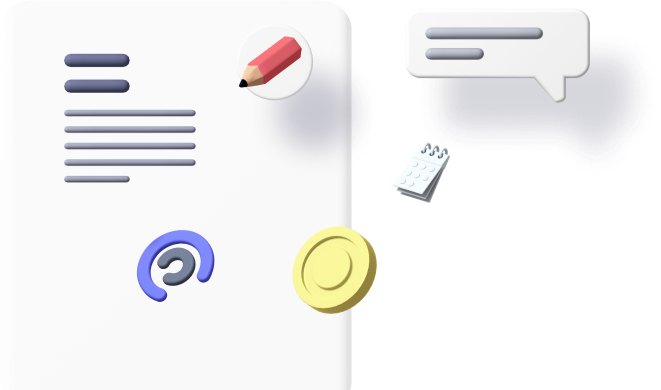Digital marketing has become an indispensable tool for businesses, marketers, and individuals navigating the modern digital landscape. Whether you’re a business owner aiming to expand your audience, a marketer looking to sharpen your skills, or a curious beginner eager to explore the world of online promotion, this guide will walk you through the fundamentals of digital marketing, its significance, and how you can get started.

What is Digital Marketing?
Digital marketing involves the use of digital media, platforms, and technologies to promote products, services, or brands. Unlike traditional marketing, which relies on offline methods like print ads, billboards, and TV commercials, digital marketing leverages the internet and electronic devices to connect with audiences. It encompasses a variety of strategies, including search engine optimization (SEO), social media marketing, email marketing, content marketing, and more.
The primary goal of digital marketing is to deliver the right message to the right audience at the right time. It enables businesses to engage with their customers in a personalized and measurable way, making it a cost-effective and efficient approach to marketing.
Why is Digital Marketing Important?
- Global Reach: Digital marketing eliminates geographical barriers, allowing businesses to connect with audiences worldwide. For example, a small business in India can sell its products to customers in the United States through an e-commerce platform.
- Cost-Effective: Compared to traditional marketing, digital marketing is more affordable and offers a higher return on investment (ROI). For instance, running a Facebook ad campaign can cost significantly less than a TV commercial but reach a more targeted audience.
- Measurable Results: Tools like Google Analytics enable businesses to track the performance of their campaigns in real-time. Metrics such as click-through rates (CTR), conversion rates, and bounce rates provide valuable insights into what’s working and what’s not.
- Targeted Advertising: Digital marketing allows businesses to target specific demographics, interests, and behaviors. For example, a fitness brand can target gym enthusiasts aged 18-35 with Instagram ads.
- Improved Customer Engagement: Through social media and other platforms, businesses can interact directly with their customers, building stronger relationships. For instance, responding to customer queries on Twitter or hosting live Q&A sessions on Instagram can enhance brand loyalty.
Essential Elements of Digital Marketing

1. Search Engine Optimization (SEO)
SEO is the process of optimizing your website to rank higher on search engine results pages (SERPs). By using relevant keywords, creating high-quality content, and improving website performance, businesses can attract organic traffic and increase visibility. Tools like Google Search Console and Ahrefs can help you analyze and improve your SEO strategy.
For example, if you run a bakery, optimizing your website for keywords like “best cupcakes near me” or “affordable birthday cakes” can help local customers find you easily.
2. Social Media Marketing
Platforms like Facebook, Instagram, LinkedIn, and Twitter are powerful tools for reaching and engaging with your target audience. Businesses can use these platforms to share content, run ads, and interact with customers. For example, Instagram ads and LinkedIn campaigns are highly effective for reaching specific demographics.
A clothing brand, for instance, can use Instagram Stories to showcase new arrivals or collaborate with influencers to promote their products.
3. Content Marketing
Content marketing involves creating and sharing valuable, relevant, and consistent content to attract and retain a clearly defined audience. This can include blog posts, videos, infographics, and eBooks. A strong content strategy ensures that your audience stays engaged and informed.
For example, a tech company can create how-to guides or tutorial videos to educate their audience about using their products.
4. Email Marketing
Email marketing is a direct way to communicate with your audience. By sending personalized emails, businesses can nurture leads, promote products, and build customer loyalty. Tools like Mailchimp and HubSpot make it easy to create and manage email campaigns.
For instance, an online store can send personalized discount codes to customers who abandoned their shopping carts, encouraging them to complete their purchase.
5. Pay-Per-Click Advertising (PPC)
PPC is a model of internet marketing where advertisers pay a fee each time their ad is clicked. Google Ads and social media ads are common examples of PPC. With proper ad targeting and cost-per-click (CPC) management, businesses can maximize their ROI.
For example, a travel agency can run Google Ads targeting keywords like “affordable vacation packages” to attract potential customers.
6. Affiliate Marketing
Affiliate marketing involves partnering with influencers or other businesses to promote your products or services. You pay a commission for every sale or lead generated through their efforts. Platforms like Amazon Associates and ShareASale are popular for running affiliate programs.
For instance, a skincare brand can collaborate with beauty bloggers to review their products and share affiliate links with their followers.
7. Analytics and Data-Driven Marketing
Analyzing data is crucial for understanding the effectiveness of your campaigns. Tools like Google Analytics help businesses make informed decisions and optimize their strategies. By tracking metrics like click-through rates (CTR) and conversion rates, you can refine your digital marketing efforts.
For example, if a Facebook ad campaign is not generating enough leads, you can analyze the data to identify the issue and make necessary adjustments.
How to Get Started with Digital Marketing
1. Define Your Goals
Before diving into digital marketing, it’s important to set clear goals. Are you looking to increase brand awareness, generate leads, or drive sales? Your goals will shape your strategy.
2. Identify Your Target Audience
Understanding your audience is key to creating effective campaigns. Research their demographics, interests, and online behavior to tailor your messaging.
3. Choose the Right Channels
Not all digital marketing channels will be relevant to your business. Focus on the platforms where your audience is most active. For example, Instagram and TikTok are great for younger audiences, while LinkedIn is ideal for B2B marketing.
4. Create High-Quality Content
Content is the backbone of digital marketing. Ensure your content is informative, engaging, and aligned with your audience’s needs. Whether it’s blog posts, videos, or infographics, focus on delivering value.
5. Monitor and Adjust
Digital marketing is an ongoing process. Regularly analyze your performance and make adjustments to improve results. Use tools like Google Analytics and social media insights to track your progress.
Common Mistakes to Avoid
- Ignoring Mobile Users: With the majority of internet users accessing content via mobile devices, it’s essential to optimize for mobile. Ensure your website is mobile-friendly and your ads are designed for smaller screens.
- Keyword Stuffing: Overloading your content with keywords can harm your SEO efforts. Focus on natural, user-friendly content that provides value to your audience.
- Neglecting Analytics: Without tracking your performance, you won’t know what’s working and what’s not. Use tools like Google Analytics to monitor your campaigns and make data-driven decisions.
- Inconsistent Branding: Ensure your messaging and visuals are consistent across all platforms. This helps build brand recognition and trust among your audience.
Advanced Tips for Digital Marketing Success
- Leverage Video Marketing: Videos are highly engaging and can help you connect with your audience on a deeper level. Platforms like YouTube and TikTok are great for sharing video content.
- Use Retargeting Ads: Retargeting allows you to reach users who have previously interacted with your brand. For example, if a user visited your website but didn’t make a purchase, you can show them ads to encourage them to return.
- Focus on Local SEO: If you have a local business, optimizing for local SEO can help you attract customers in your area. This includes creating a Google My Business profile and using location-based keywords.
- Experiment with Emerging Trends: Stay updated with the latest trends in digital marketing, such as voice search optimization, AI-powered chatbots, and interactive content.
Conclusion
Digital marketing is a dynamic and ever-evolving field that offers endless opportunities for businesses and individuals. By understanding its core components and implementing the right strategies, you can effectively reach your target audience and achieve your goals. Whether you’re a beginner or looking to refine your skills, this guide provides a solid foundation to help you navigate the world of digital marketing.
If you’re specifically looking for digital marketing services in Tirunelveli, you can explore Digital Marketing in Tirunelveli to find tailored solutions for your business needs.
Remember, success in digital marketing requires patience, creativity, and continuous learning. Start small, experiment, and don’t be afraid to adapt as you go. The digital landscape is vast, and with the right approach, the possibilities are limitless.



